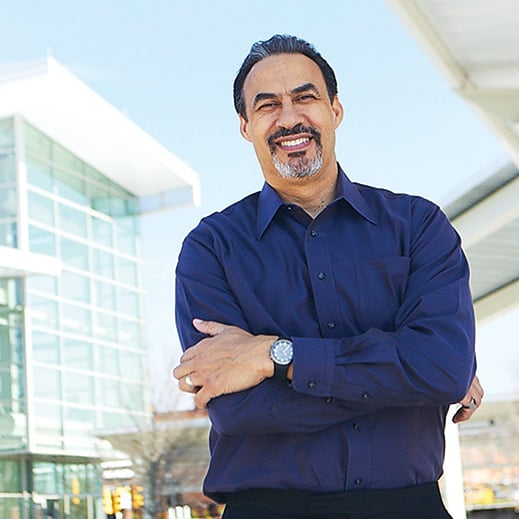Artistic expression is important in Philip Freelon’s family. His grandfather, Allan Freelon Sr., was an impressionist during the Harlem Renaissance, and his wife, Nnenna Freelon, is a jazz singer and composer who has been nominated for six Grammy Awards. Philip Freelon is neither a painter nor a singer, but he sees his profession, architecture, as an art form too.

“Architecture is art with utility,” he says. “It’s the perfect blend of art and science: artistic, aesthetic, and serving an everyday purpose in the world.”
Freelon is founder, principal, and president of the Freelon Group, a 45-person architecture firm based in North Carolina’s Research Triangle Park. The firm has won more than 50 American Institute of Architects awards and is known for its public projects, including the National Center for Civil and Human Rights in Atlanta, the Museum of the African Diaspora in San Francisco, and the Tenley-Friendship Neighborhood Library in Washington, D.C.
“A building is an outgrowth of its contents,” Freelon says. “For cultural projects, we believe that a building’s form, materials, and configuration should help fulfill and express that institute’s vision and mission.”
In 2009, a group Freelon led was selected to design the Smithsonian Institution’s National Museum of African American History and Culture, a $500 million project that will open on the National Mall in 2015. “It’s been very hands-on, from predesign to the drawing, detailing, and construction,” he says.
In 2011, President Barack Obama appointed him to serve as the practicing architect for the seven-member U.S. Commission of Fine Arts, an independent federal agency that has review authority over design endeavors within D.C., including historic public spaces and monuments.
Freelon is also a regular presence on the MIT campus. He is on the faculty at the School of Architecture and Planning and teaches its fall-semester professional practice course.
“I’m always impressed with the quality of the students at MIT,” he says. “It’s important for me to stay connected to academia. I’m stimulated by the young minds and the talents of the students I come in contact with.”
Phil and Nnenna, married for 34 years, live in Durham. They have three children—Deen, an assistant professor at American University; Pierce, a musician and professor at North Carolina Central University; and visual artist Maya Freelon Asante—and three grandchildren.
Keep Reading
Most Popular
Large language models can do jaw-dropping things. But nobody knows exactly why.
And that's a problem. Figuring it out is one of the biggest scientific puzzles of our time and a crucial step towards controlling more powerful future models.
The problem with plug-in hybrids? Their drivers.
Plug-in hybrids are often sold as a transition to EVs, but new data from Europe shows we’re still underestimating the emissions they produce.
Google DeepMind’s new generative model makes Super Mario–like games from scratch
Genie learns how to control games by watching hours and hours of video. It could help train next-gen robots too.
How scientists traced a mysterious covid case back to six toilets
When wastewater surveillance turns into a hunt for a single infected individual, the ethics get tricky.
Stay connected
Get the latest updates from
MIT Technology Review
Discover special offers, top stories, upcoming events, and more.